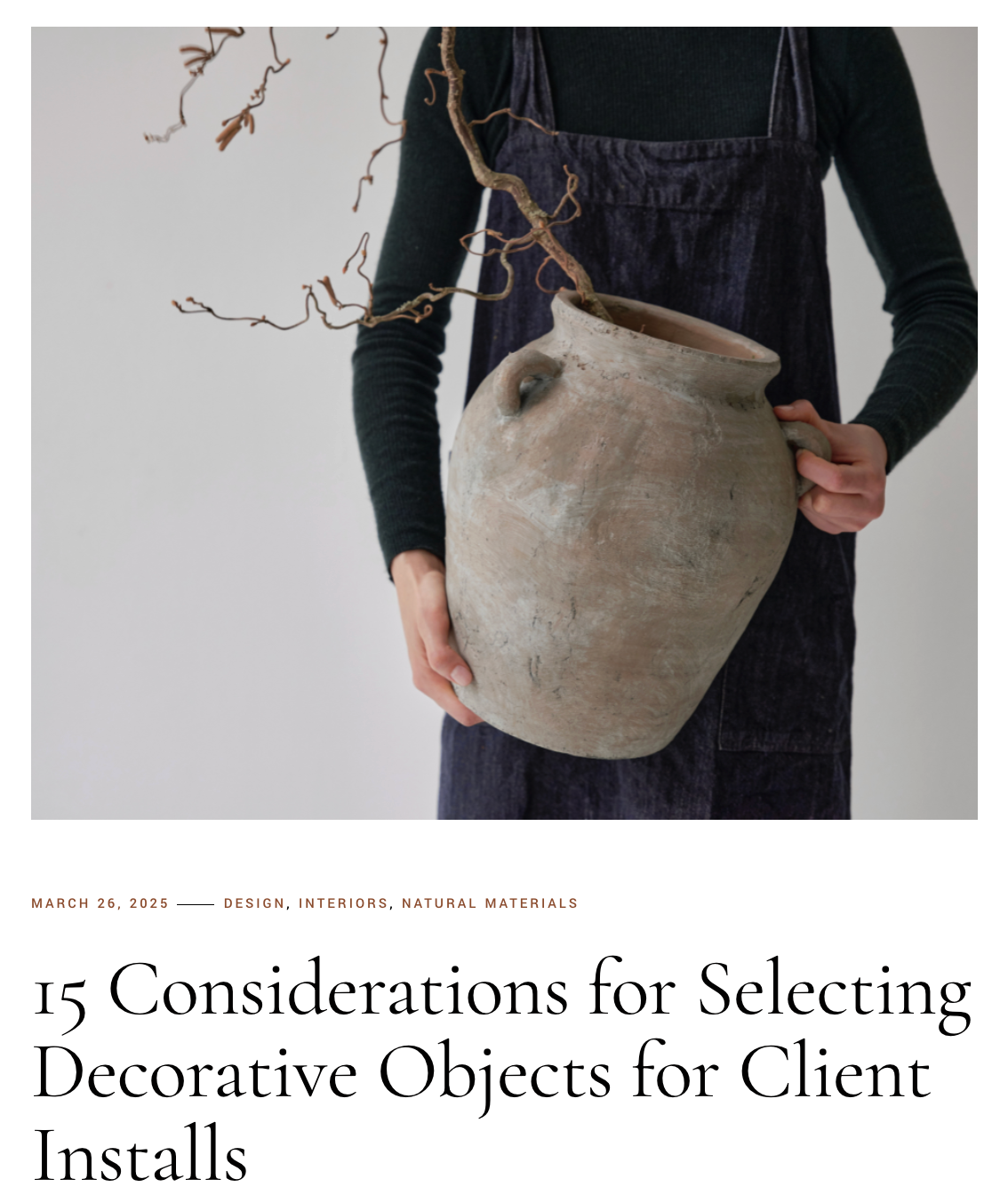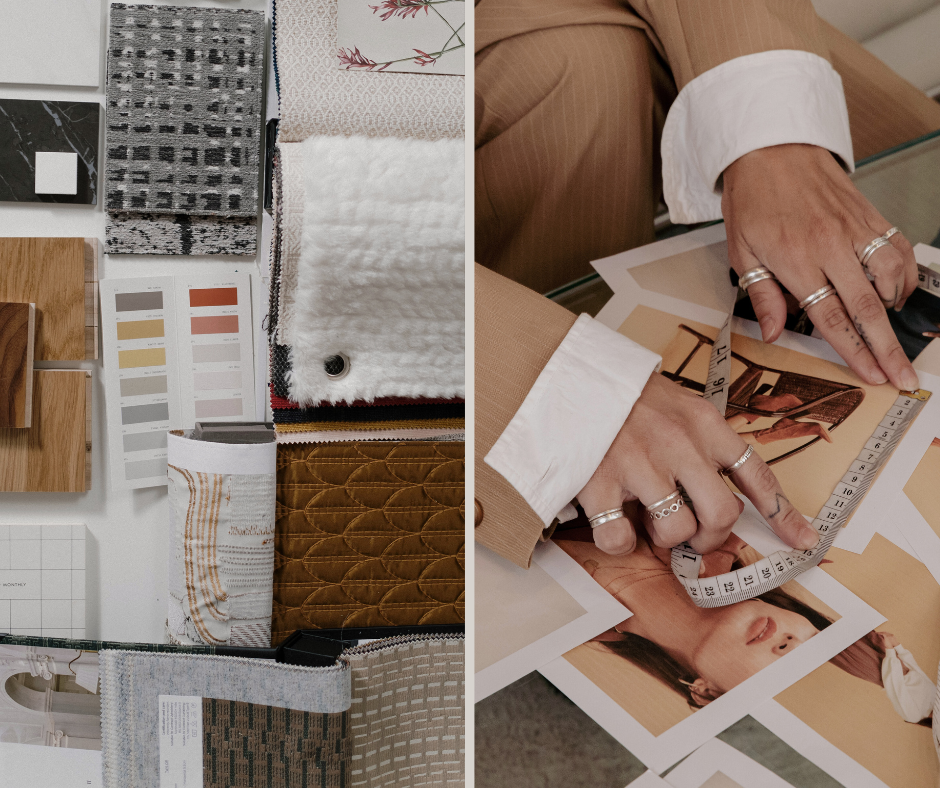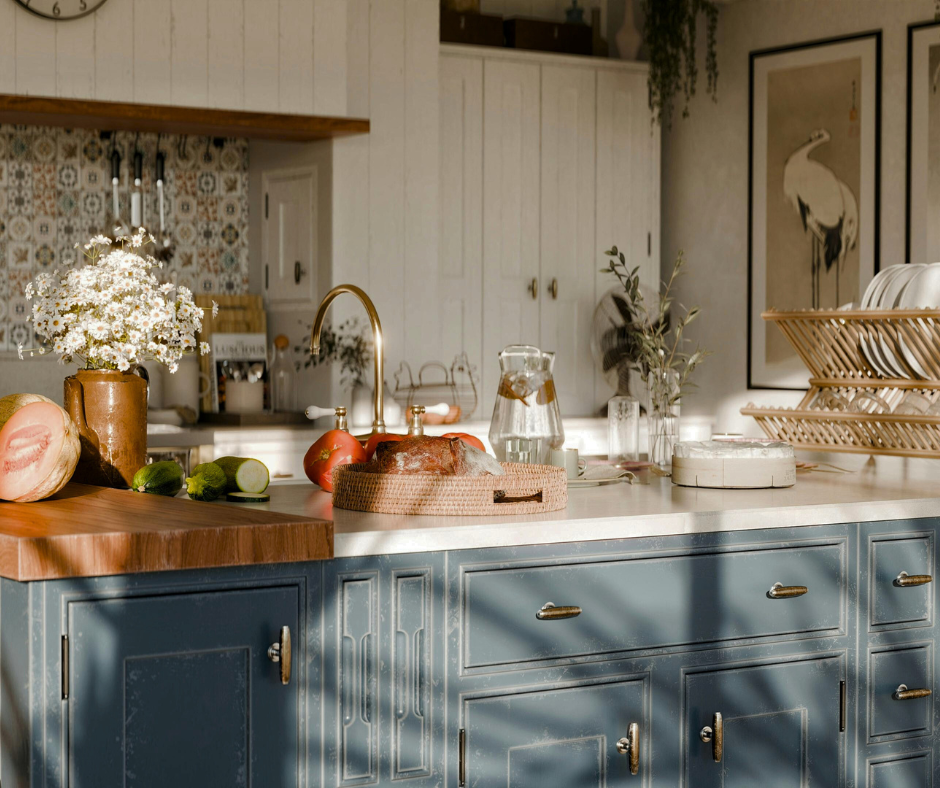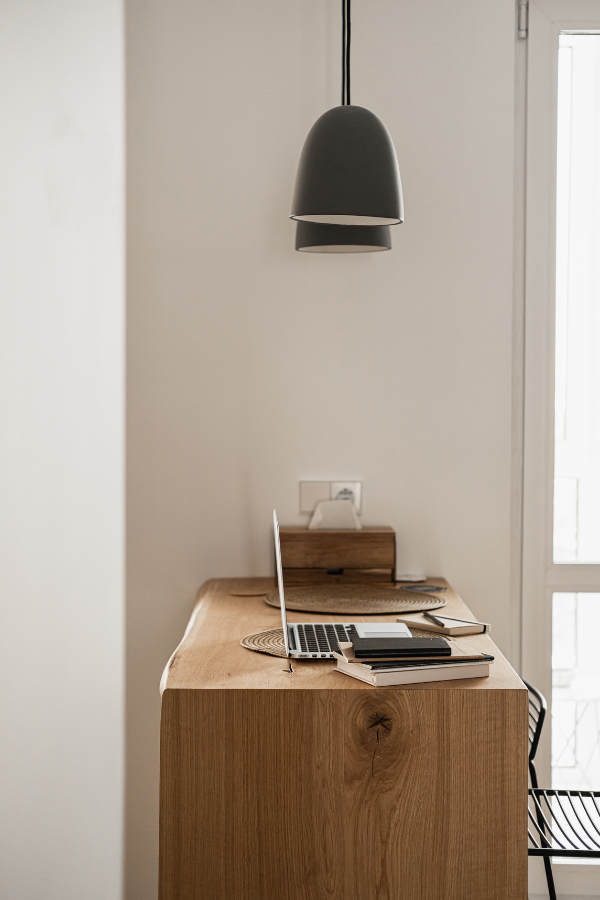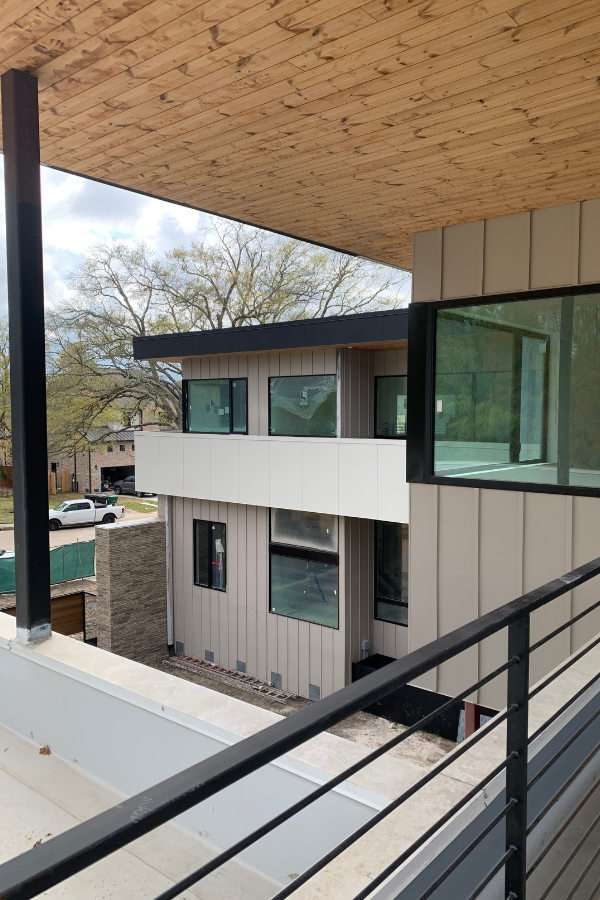
What is Soft Minimalism and How Can I Capture the Interior Design Style?
Summary
Soft minimalism blends the clarity of minimalism with the warmth of natural materials, gentle curves, and lived-in textures. It’s calm, unfussy, and personal, relying on thoughtful editing rather than strict rules. The look stays clean but never cold, and it adapts easily to real life. We encourage you to take inspiration from interiors designed by DesignDash Community members Christine Cook and April Littmann if you love soft minimalist aesthetic.
Reflection Questions
Which pieces in your home genuinely support comfort and daily flow, and which ones feel like visual noise you’ve learned to ignore?
Where could natural materials or softer shapes help your rooms feel calmer without adding more things?
How does the light in your home shift throughout the day, and are you arranging spaces in a way that works with it rather than fighting it?
Journal Prompt
Take one room in your home and describe how it feels in the morning, afternoon, and evening. Notice what draws your eye, what disrupts the calm, and what brings a sense of warmth. Then write a few lines about how you’d simplify or soften the space so it supports the pace of your day rather than competing with it.
Soft minimalism sits in a space that feels familiar to anyone who has watched minimalism evolve over the past decade. Designers began noticing that stark interiors, while elegant, sometimes felt a bit aloof, unstructured, and impersonal. The response to that was a gentler direction that kept the clarity of minimalism but “softened” its edges. According to Georgia Madden in an article for Houzz:
Soft minimalism is “defined by curved lines; gentle, tonal hues; natural materials and a careful editing of unnecessary objects so you’re only surrounded by the things you truly love.”
The style draws loosely from wabi-sabi thinking, Nordic restraint, and the appeal of lived-in materials that are actually more beautiful when revealing a small scratch or a knot in the wood. It seems to suggest that a home can stay clean and open without feeling empty or soulless. Many people are pulled to it because it encourages them to pare back while still keeping the warmth they actually want to come home to.
There’s also a bit of pragmatism behind it. Soft minimalism works well for rooms where life actually happens. None of it feels precious. Instead, it feels calm, supportive, special, and uniquely “you.”
Key Principles of Soft Minimalism

The core principles behind this style always return to materials and shapes. Natural materials define the aesthetic. Wood with visible knots, stone with tonal variation, linen with a loose weave. These choices create texture and keep the room warm even when the layout is simple. Minimalism is far less austere when the senses are engaged, even if subtly.
Curves help too. A rounded coffee table or a sofa with softened edges can change the entire room. They soften the architecture and make the furniture more inviting. Many designers say that once organic shapes enter the mix, the room feels so much more balanced. Quoting Drew Michael Scott in an article for RealSimple from earlier this year, Hannah Baker writes that…
“‘There’s something about the way [organic curves on furniture] flow into a space—less rigid, more adaptable to how you live and move within a room. It can even inspire you to play with layouts you might not usually consider!'”
In soft minimalist interiors, clean lines still provide structure, but they don’t dominate. There’s room for both.

Layering also plays an important role, as in any beautifully designed interior. A natural rug beneath a smooth side table, a woven throw paired with calmer surfaces, a subtle mix of accessories. Sometimes the layering becomes slightly uneven or too symmetrical, and then someone adjusts it and the space feels right again. That imperfect rhythm gives the room a sense of life rather than a styled showroom identity.
Functionality matters almost as much as form. A piece should serve a purpose. The room doesn’t need many things; it needs the right things. And once you rid yourself of items that distract, the simplicity of your space is soothing rather than restrictive.
Color Palette and Lighting
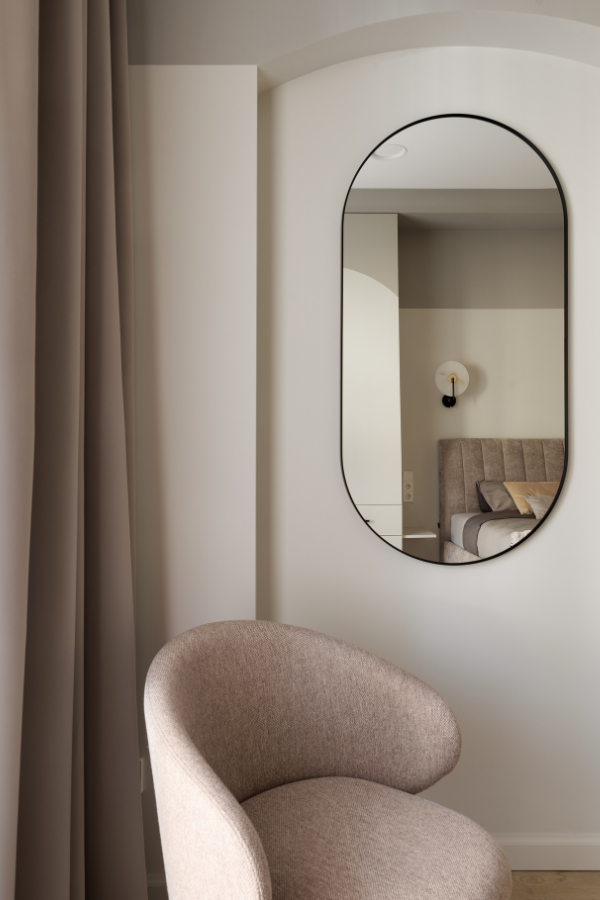
The color palette gravitates toward earthy tones and warm neutrals; nature is the inspiration here, but not in a literal, theme-driven way. Beige, soft clay tones, muted whites. These colours shift subtly throughout the day and give interiors a gentle warmth without overwhelming the eye. Paired with natural light, the palette feels timeless. You can walk through a room in the morning and notice how differently the walls read by evening.
Lighting requires a bit of thought. Many soft minimalist interiors avoid bright overhead glare. Instead, designers aim for a combination of floor lamps, table lamps, and indirect light that softens the room. When light touches stone or wood in these settings, it enhances texture and makes the space feel more inviting. A single shaded lamp near a kitchen counter can transform the mood after sunset.
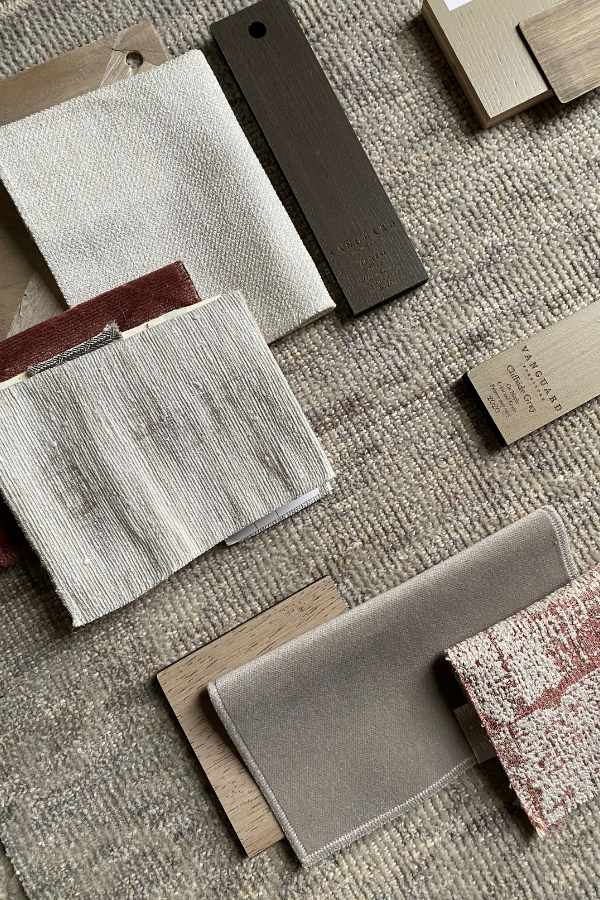
Plants often appear in soft minimalist rooms because they echo natural materials and help connect the interior space with the outdoors. A bit of greenery near a window adds serenity. It doesn’t need to be dramatic. The simple presence of something living creates a sense of warmth and helps anchor the palette.
Artificial and natural light work together. This mix keeps the atmosphere relaxing and avoids that sterile feeling some minimal interiors drift into. The goal isn’t perfect brightness. It’s a level of comfort that matches the pace of the room.
Embracing Organic Shapes
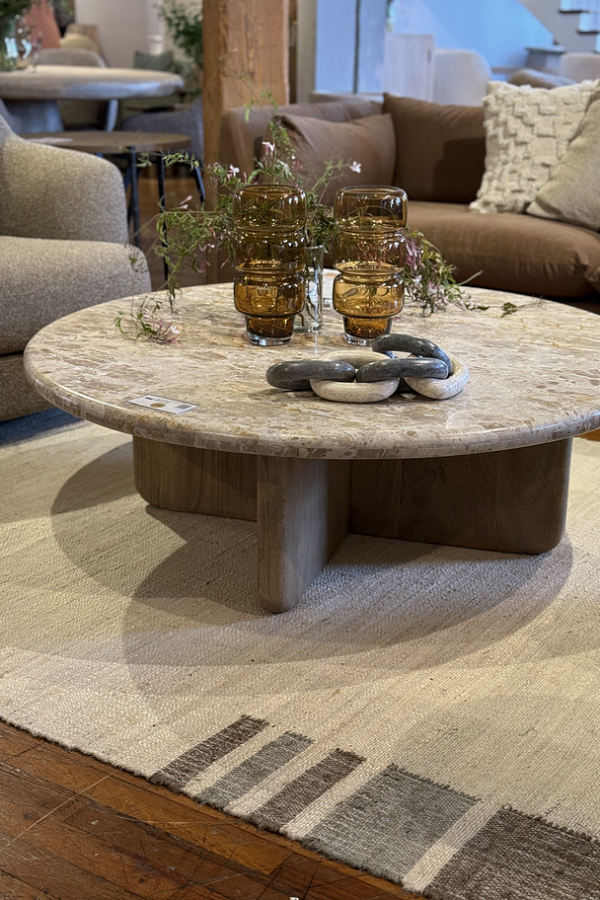
Designers have been talking about organic shapes for years, but within soft minimalism, they operate with more nuance than “add a curve here and there.” Traditional minimalism calls for sharp, angular designs, but the soft minimalism look embraces coziness and comfort. These shapes gently influence scale, balance, and the transitions between architectural lines. A sculptural side table, a softened edge on a built-in, or even a subtly rounded room divider can introduce a natural rhythm that makes the space feel more approachable.
Natural materials support this direction, though they don’t need to be rustic. Stone with faint yet dynamic veining or wood with prominent grain brought out by a subtle stain can look incredibly refined. These materials add interest without overwhelming the simplicity of the layout. Clay, ceramics, and handmade objects work well too because they bring a tactile contrast that keeps the interior from feeling flat or monotone.
Accessories deserve more credit here than in traditionally minimalist interiors. In some cases, a well-placed object can define the mood of a room more effectively than large pieces of furniture. It might be something from a trip or an object you’ve lived with for years. When these pieces hover above quieter surfaces, they feel intentional and personal without tipping the room toward clutter. If you need help selecting decorative objects for your home or a client’s, check out this article from DesignDash.
Soft minimalism embraces the idea that materials shift over time. A bit of fading, a slight dent, the patina that appears on a stone counter after real use. These changes support the essence of the style because they reinforce the connection between the home and the people living in it.
How Christine Cook and April Littmann Capture Soft Minimalism
DesignDash Community members Christine Cook and April Littmann both have their own unique takes on the soft minimalist design style. Several of the spaces in Littmann’s Organic Modern renovation capturing the aesthetic quite perfectly, as does the living area in the Mediterranean-inspired home Christine Cook designed. You can learn more about Cook’s project in the Fall 2025 issue of DesignDash Magazine and Littmann’s in our summer issue from earlier this year.
Neighbor Interiors’ Organic Modern Living Space
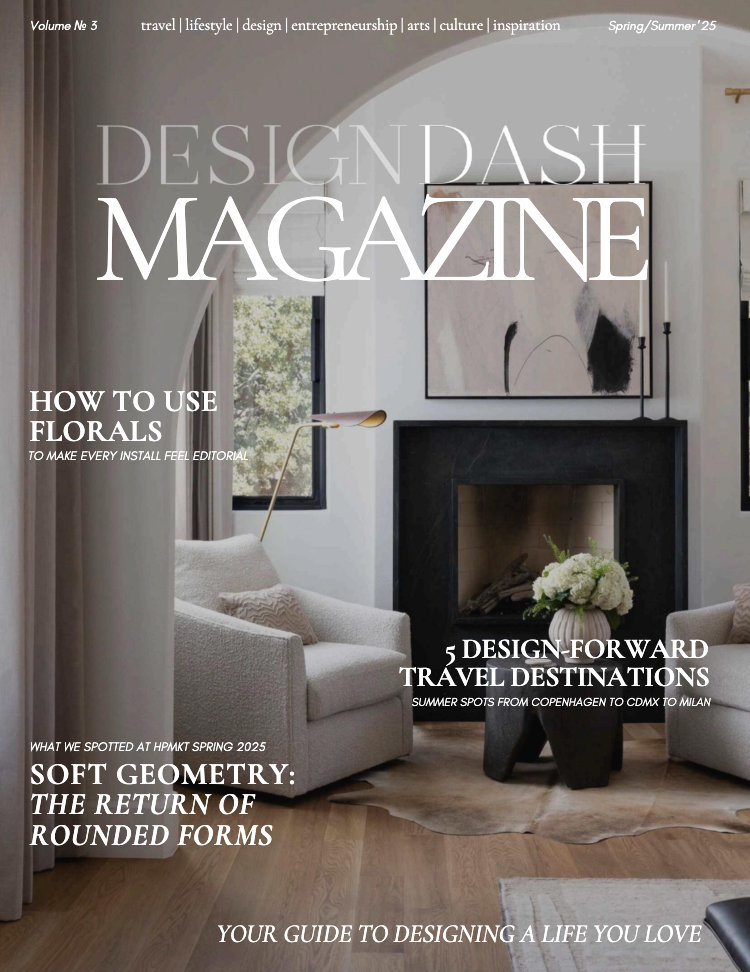
This room designed by Littmann captures soft minimalism through its balance of sculptural form, cozy textures, and decorative restraint. The architecture does half the work here; the plastered arch introduces softness before any furniture even enters the conversation, and the matte black fireplace adds grounded contrast without overwhelming the palette.
Designers rely on this kind of tension (light surrounding a single dark anchor) because it keeps the room from feeling washed out. Materiality is essential, of course. The chairs show the movement’s signature curve, but the fabric choice matters just as much as their silhouette; the nubby texture breaks up the simplicity so the space doesn’t feel stark. Even the art plays a role, with brushy, abstract strokes that feel loose and organic. Everything here feels intentional but not overhandled, which is exactly why the room reads so calm, quiet, and cozy.
EP Interiors’ Mediterranean-Inspired Living Space
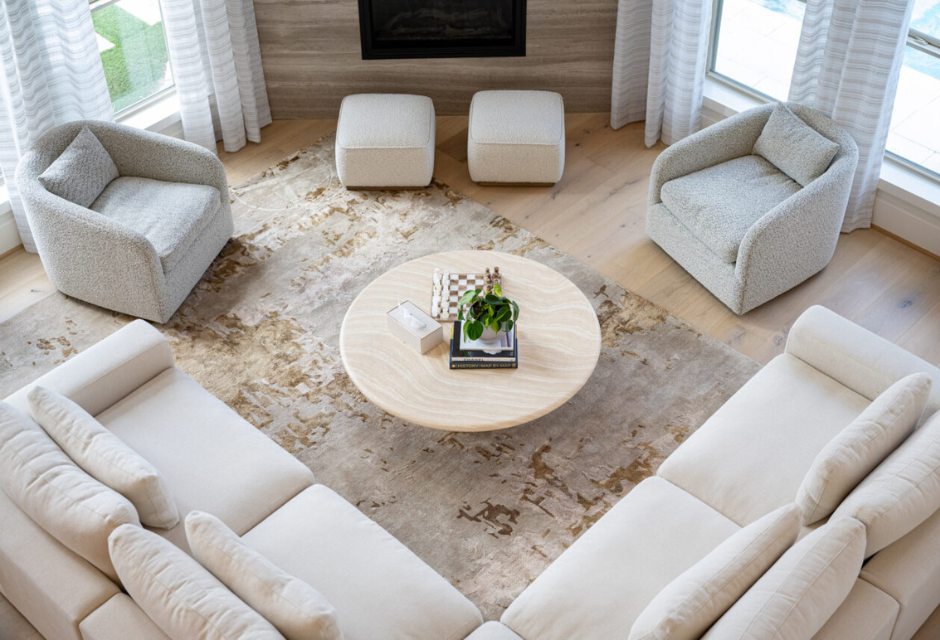
This space designed by Christine Cook leans fully into the natural-materials side of soft minimalism; this is where she retained the Mediterranean throughline without being too literal. The travertine table sets the tone immediately; its soft veining and matte surface bring warmth and intensity without needing any ornament.
The chair next to it has a cocoon-like shape that supports the body, proving how often comfort and silhouette work together in this style. Designers use these compact, rounded pieces because they provide sculptural presence and weight without adding a lot of visual bulk. The palette is whisper-light (pale upholstery, blonde floors, a low-contrast rug), which allows textures and shapes to create the depth color usually would.
Fuel your creative fire, thrive with support from peers, & make 2025 your firm’s best year yet!
JOIN THE DESIGNDASH COMMUNITY

Even the natural light contributes, washing everything in a warm, even glow that pulls the room together. Nothing here feels precious, yet everything feels thoughtfully selected, which is exactly why the space lands so well within soft minimalism.
Implementing the Soft Minimalist Lifestyle
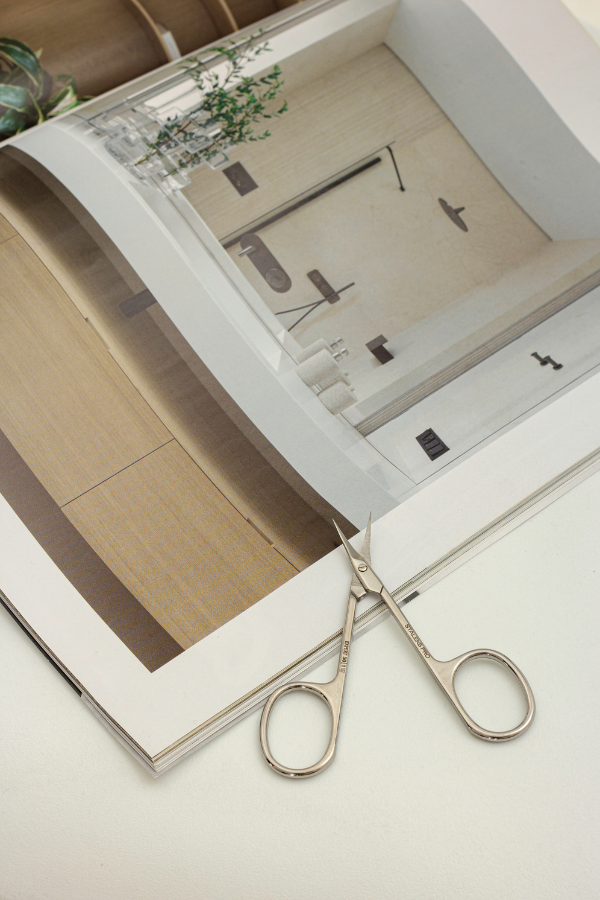
Living with soft minimalism is a gradual process, and most people ease into it in small, unobtrusive ways. They remove things they stopped noticing. They rethink the objects sitting on the coffee table. They look at the room and ask what actually supports comfort, flow, coziness, and togetherness. Eventually the space feels more open and the eye relaxes instead of darting all over the place. But remember, there are no strict rules here.
Furniture choices shape the lifestyle more than anything. A well-built sofa, a thoughtfully scaled coffee table, a rug that defines zones in the room without dominating it. When the key pieces serve daily routines gracefully, the room holds its shape. The style doesn’t demand constant rearranging, but it’s not boring either. It adapts to life rather than resisting it.
Colors, textures, and materials create the foundation, but the habits around them give the home meaning. A clean kitchen counter in the morning, warm light in the evening, and the comfort of walking through a room that feels familiar without feeling cluttered. These small routines build a sense of serenity.
Soft minimalism gives you permission to breathe but also permission to cuddle up. It doesn’t insist on perfection. It simply encourages you to focus on what you love, invest in pieces with purpose, and create interiors that feel relaxing.
Clean, Calm, and Cozy, Soft Minimalism is Perfect for After the Holidays

Soft minimalism isn’t rigid. It’s more of an evolving idea shaped by materials, light, and the way people move through their spaces. The style feels clean yet warm, calm yet full of life. You can connect natural textures with modern design in a way that doesn’t push too hard in any direction.
When you walk into a room built around these principles, you notice comfort first. The look is simple, but not plain, and the pieces feel thoughtfully chosen. Interiors built this way tend to age well because they rely on elements that remain appealing long after trends fall out of favor.
And that’s just enough.
*The interior in the featured image of this article was designed by April Littmann of Neighbor Interiors.
Written by the DesignDash Editorial Team
Our contributors include experienced designers, firm owners, design writers, and other industry professionals. If you’re interested in submitting your work or collaborating, please reach out to our Editor-in-Chief at editor@designdash.com.



